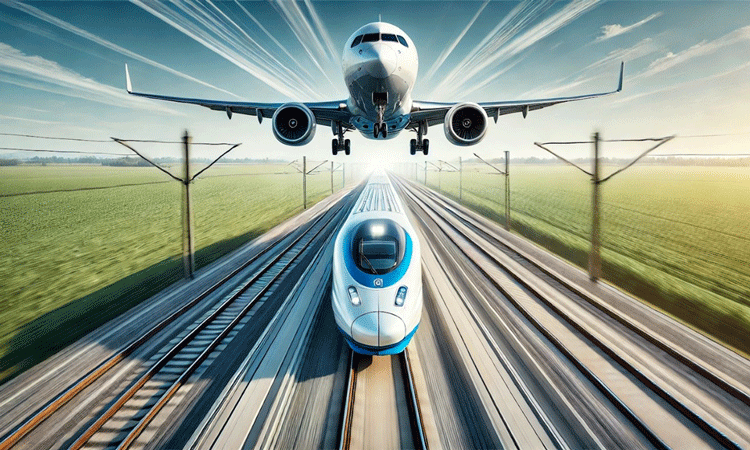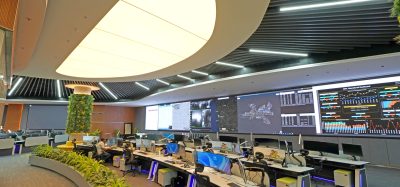Bridging the gap: The future of intermodality between airports and rail
Posted: 24 September 2024 | Helena Hill, Matt Mullen | No comments yet
For International Airport Review, Helena Hill and Matt Mullen explore how integrating aviation, rail and other modes can create seamless travel experiences. Discover the challenges, opportunities and the transformative potential of a unified, customer-centric approach for the UK’s transport system.


When you book a trip, what are you thinking about? It’s a pretty good guess to say the destination; the hotel, the swimming pool, that tasty margarita! Then comes finding the right travel options. Scanning all those apps and websites to find travel options that tick the boxes around time, price and convenience.
If you’re lucky, you might be able to book a journey including all of this. However, pursuing the best price often comes with disconnectivity. The result? A siloed multimodal journey with different tickets, rules and operators coupled with limited to no consistency, leading to confusion, stress and anxiety for the customer – sounds like they are doing all the hard work. This should not be the case. Travel is the stepping stone to where the customer wants to be. They don’t understand silos. They expect a seamless experience from the outset.
As the world becomes increasingly interconnected, the aviation industry is faced with the pressing challenge of meeting growing demands for efficient and seamless travel, and this article explores the challenges, opportunities and value gained from such integration. Let’s deep dive into how aviation, rail and other modes could bridge the gap to create truly seamless, inclusive and easy travel experiences for all.
What can we expect from the UK’s future transport system?
The UK transport landscape is set for significant changes under the new Labour Government, which aims to renationalise rail operators, establish Great British Railways (GBR) and empower local authorities to manage bus services. By bringing all passenger rail services into public ownership as current contracts expire, the aim is for GBR to centralise control, merging Network Rail and the Rail Delivery Group to enhance efficiency and service delivery.
A key inspiration for GBR is Switzerland’s SBB, which offers an integrated transport system allowing seamless travel across multiple modes. The SBB mobile app exemplifies this integration by enabling users to plan and book journeys that combine train, bus, tram and even air travel in a single transaction. This comprehensive system enhances user convenience and efficiency, setting a high standard for what GBR aims to achieve in the UK. The Swiss Air Rail service, which merges train and flight bookings by allowing customers to have a single boarding pass for both the rail journey and flight, further illustrates the potential for a cohesive travel experience.
Labour also supports local initiatives, such as Greater Manchester’s Bee Network, to integrate various transport modes like Transport for London (TfL). TfL is a prime example of a successful integrated transport network, combining buses, the London Underground, trams and river services under one system. One of the key features of TfL’s model is the Oyster card and contactless payment system, which allows passengers to seamlessly transition between different modes of transport using a single payment token. This system not only simplifies fare collection, but also encourages the use of public transport by making it more convenient and accessible.
Another model to consider is Amazon’s approach to third-party sellers. Amazon provides a platform where third-party sellers can operate, with Amazon maintaining control over the customer journey, providing a degree of accountability. If issues arise, customers have a single point of contact. This model could be applied to the UK transport landscape. By owning the customer journey, GBR could streamline operations and provide a consistent and reliable experience, and provide a singular representative to other industries, such as aviation, to interact and integrate with.
As a customer in the UK’s future transport system, you could experience a seamless and integrated journey across various modes of transport. Imagine planning your trip using a consolidated travel app, much like Switzerland’s SBB, which allows you to book trains, buses, trams, and even flights all in one place. When you travel, you’ll use a unified payment system like London’s TfL, where one card or contactless payment covers all your transport needs. This consolidation will help relieve the hassle of switching between multiple apps, especially when booking accessibility, making your travel planning stress-free.
Challenges to change
Integrating transport systems takes time, and change is not easy for everyone. It took Swiss Federal Railways (SBB), supported by the Swiss Government, 10 years to get to where they are today. Faced with political and operational barriers, it’s now a seamlessly integrated transport system. Government bureaucracy, long application and approval processes, including management of multiple stakeholders all with differing priorities, pose similar challenges here in the UK.
Disconnected travel experiences are due, in part, to a legacy of siloes, missing the opportunities of whole-system thinking, both within and between industry partners. Furthermore, aviation and rail often have mixed views of themselves as some directly compete for traffic, like Eurostar and LNER with airlines.
Digging deeper, of course, there are many reasons a customer may choose one mode over the other, such as cost, convenience or connectivity to their destination or simply because they know it has a Lego shop.
Even with all the boxes ticked, in most cases separate accounts, tickets, apps or even print-outs are required to complete a door-to-door journey. From a passenger’s point of view, this can be frustrating, disconnected with a high probability of error.
Who does a customer purchase a ticket from, or contact when something goes wrong, for example, a delayed flight leading to a missed train journey? One of the most difficult barriers to success is that of customer and journey ownership. Experiences today can often lead to a game of hot potato, with the customer being continuously pushed to the next person, doing all the hard work and getting nowhere.
Airport opportunities
There is a significant opportunity for a future nationalised rail service to bring track and train together, setting the foundation to form strategic partnerships with airlines and airports. It offers a glimpse of how creating a seamless transition between transport modes and services could stimulate wider benefits of working together, enabling a connected customer journey.
Transport for London, Solent Transport and Manchester’s new Bee network, demonstrate that at a regional level, combining journeys under one travel brand and app is possible. Since launching in 2023, the Bee network app has been downloaded 315,000 times, and over 1.6 million journeys completed. Like London and the Solent, customers can purchase a single token valid across the network and on any mode of transport, including buses, rail, tram and other micromobility options including active travel.
The benefit to the consumer is one journey, one point of contact, a single source of truth. Seamless integration between the physical, digital and social worlds of the customer could help reduce confusion over which app to use, frustration on whether it provides personalised information in real-time, or whether the spoken word of colleagues or navigation in a terminal are consistent.
A collaborative approach is beneficial to airports too. An International Airport Review article in 2023 noted the benefits of seamless integration between Hong Kong Metro and the airport, stimulating local area economic investment. Easy accessibility to the airport led to commercial and residential developments, creating a thriving business environment and supporting aviation related growth. Collaboration sounds difficult though, right?
Studies show better integration with key strategic partners could bridge the gap to create happier, better informed customers. A report by Qualtrics demonstrates a clear link between experiences and return on investment, with published case studies showing 86% of customers will pay more for a better experience, and 81% more likely to repurchase. By combining operational and experience data, the what and why, airports and their partners begin to understand the key drivers at every stage of the customer journey.
Anonymised data shared securely and used ethically could transform both industries. No siloes, only bridges toward a truly, inclusive, connected and seamless experience for all.
The Journey from here
In conclusion, with customer demand for seamless experiences, multimodal integration is set to continue at an increasing rate. The integration of airports, rail and other modes represents a transformative opportunity for the UK’s transport landscape.
By adopting a nationally unified, customer-centric approach, akin to successful models in Switzerland and London, the UK can significantly enhance the travel experience. The envisioned seamless journey, facilitated by Great British Railways and supported by strategic partnerships between airports, airlines, rail operators and local transport authorities, promises not only greater convenience for passengers but also broader economic benefits.
Overcoming existing siloes and operational barriers will be challenging, yet the potential rewards – happier customers, increased efficiency, and economic growth – make it a worthy pursuit. The future of intermodal transport in the UK hinges on collaboration, innovation and a commitment to creating an integrated, inclusive and seamless travel experience for all.


c: Helena Hill


c: Matt Mullen
Helena Hill and Matt Mullen are passionate about inclusive experiences across the aviation and rail industries. They work to make the future of travel experiences easy, personalised, intuitive and contextual, with a specialist focus on merging the built environment with the digital and social worlds of customers.
Helena Hill, Experience Design Strategist, Helena Hill Consulting
Matt Mullen, Head of Customer Information, East West Railway Company
Join our free webinar: Beyond silos: How ecosystem thinking elevates the airport experience
In today’s complex aviation landscape, airports are moving beyond siloed operations to embrace a new era of collaboration. This webinar focuses on how leading airports are using ecosystem thinking to adapt, personalize, and continuously improve every touchpoint, boosting both passenger satisfaction and non-aeronautical revenue.
Date: 13 Nov | Time: 10:00 GMT
REGISTER NOW TO SECURE YOUR SPOT
Can’t attend live? No worries – register to receive the recording post-event.


















